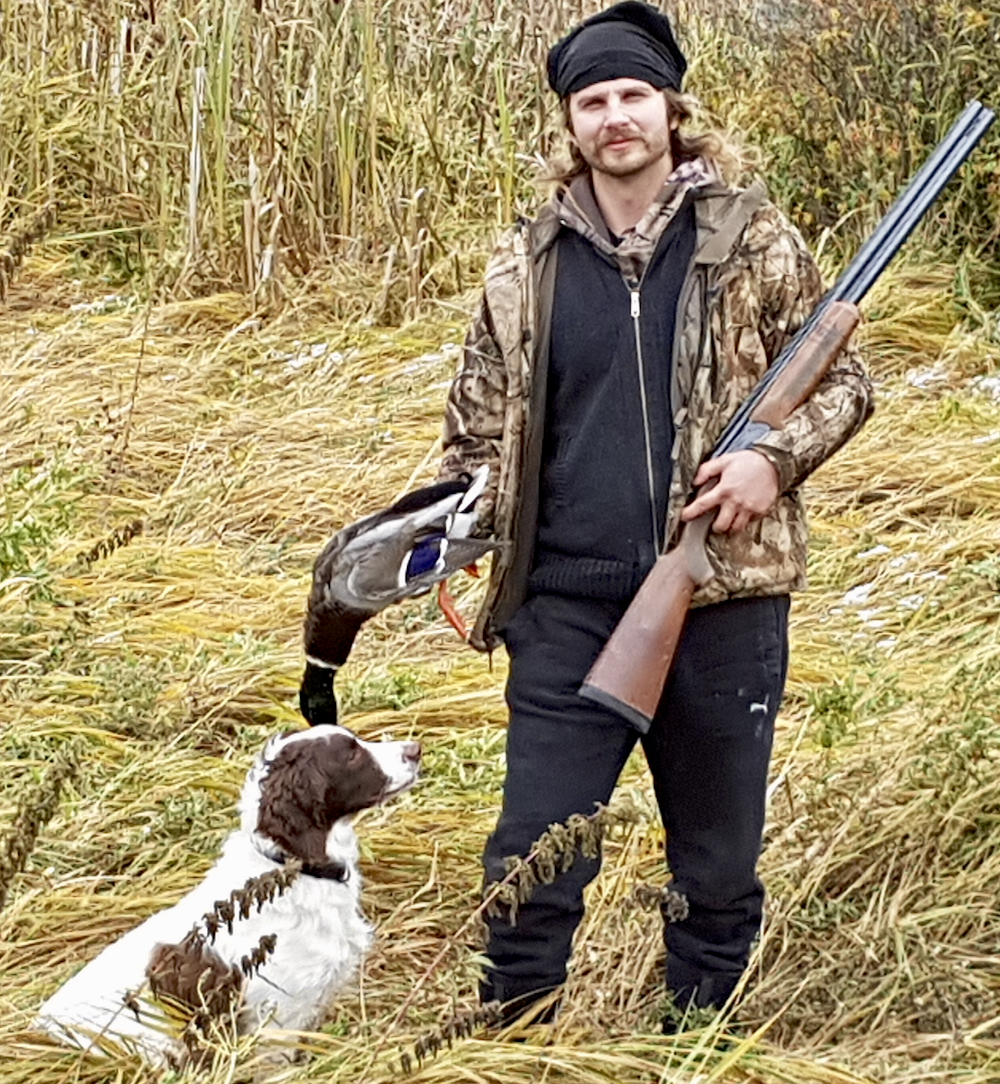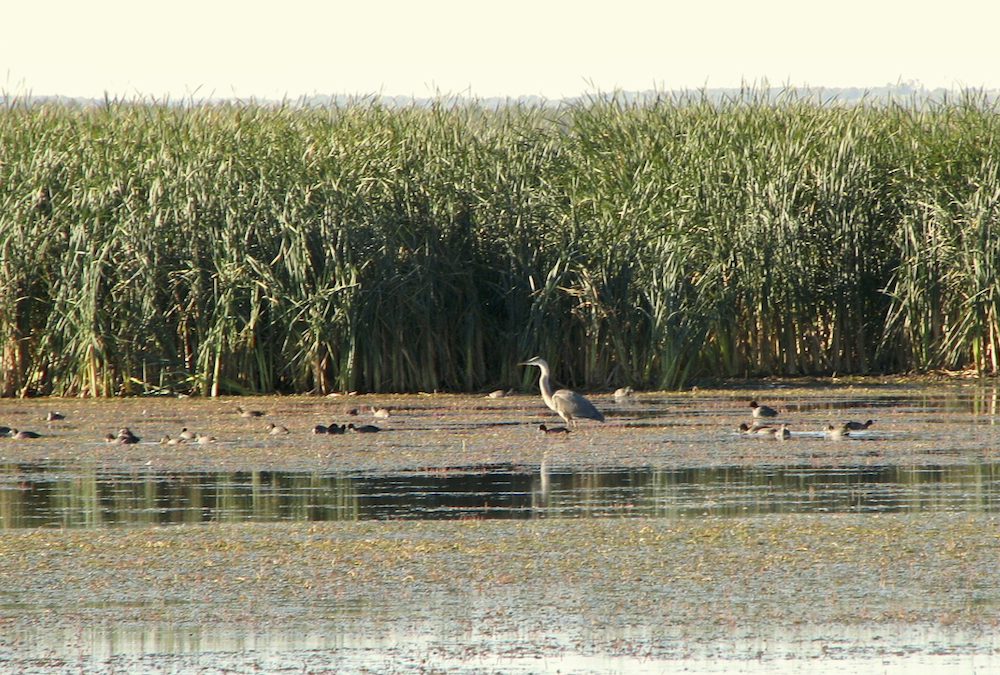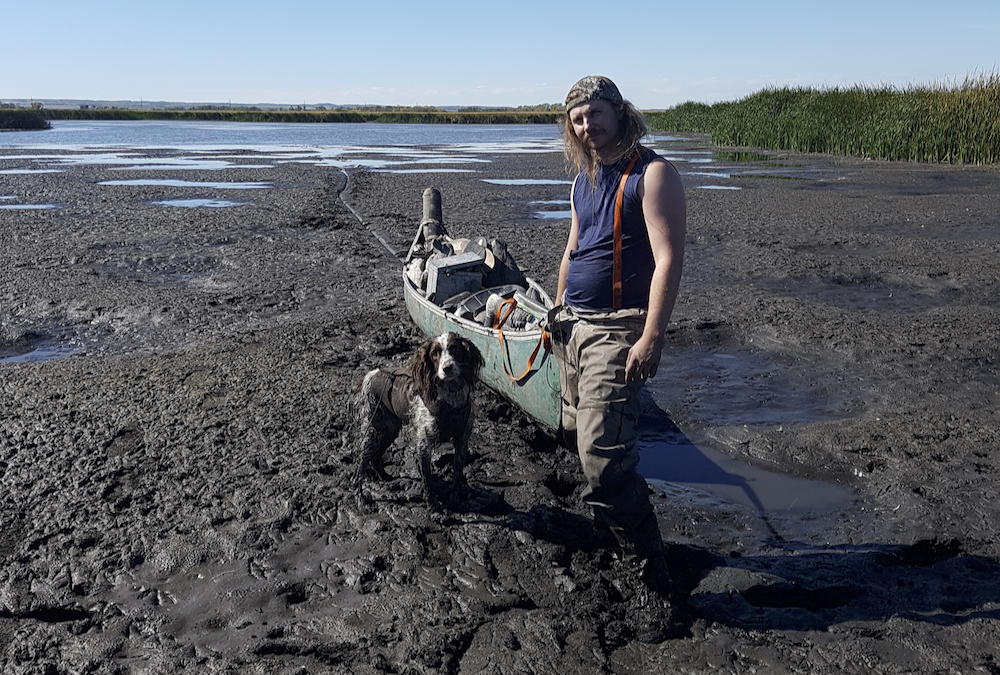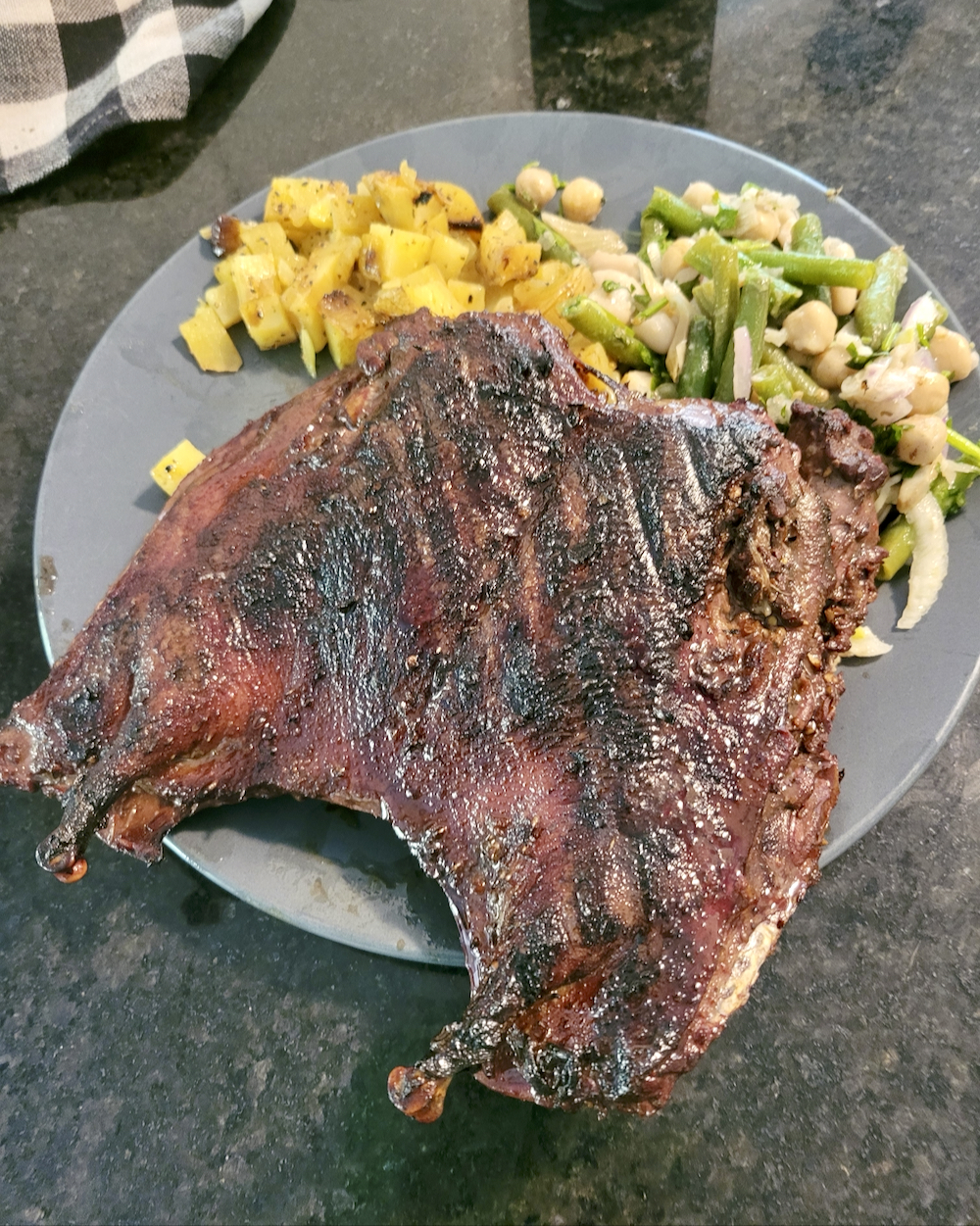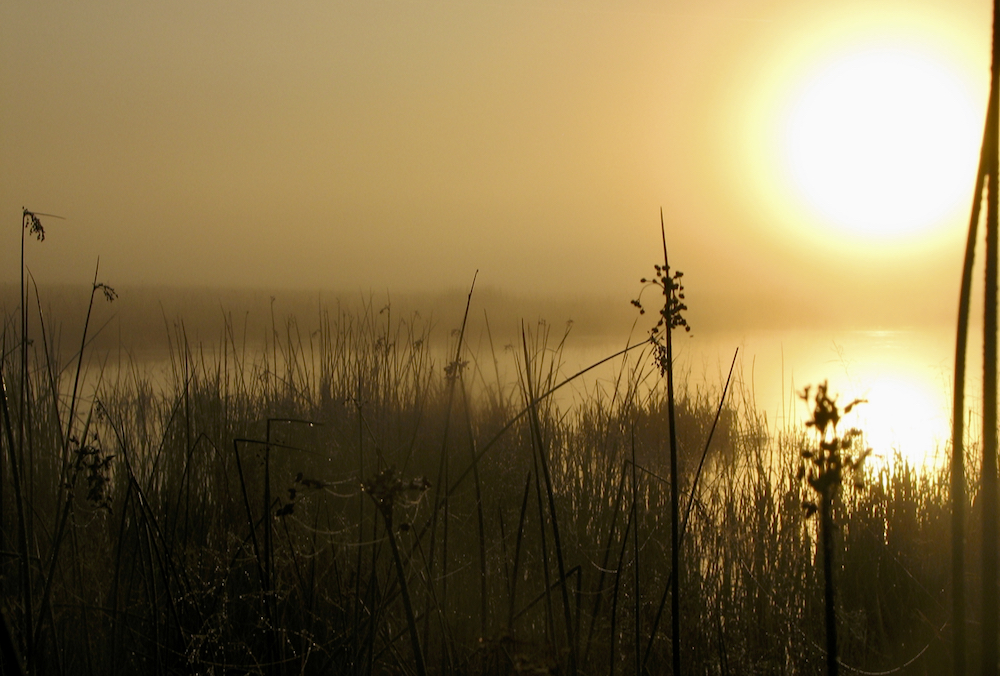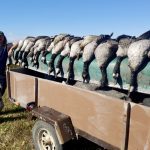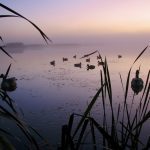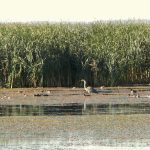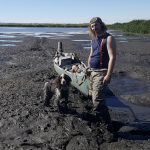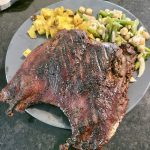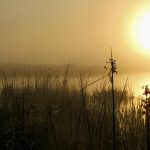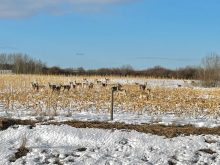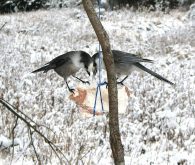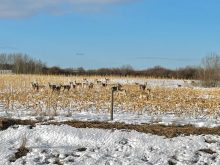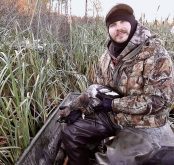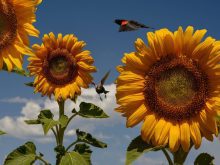
Mark and geese_Tim Sopuck
Mark Sopuck next to a bag of geese after a lucky morning on Duck Slough.
Photo: Tim Sopuck
IMG_9656_Tim Sopuck
Decoys are set in anticipation of a morning flight of ducks.
Photo: Tim Sopuck
Mark and drake mallard_Tim Sopuck
Mark Sopuck with a drake mallard.
Photo: Tim Sopuck
Duck slough birds_Tim Sopuck
Lush beds of pond weeds attract a diversity of birds to Duck Slough.
Photo: Tim Sopuck
Dry year Duck Slough_Tim Sopuck
A dry fall at Duck Slough makes for tough hunting conditions.
Photo: Tim Sopuck
20230612_174435_Tim Sopuck
Barbecued duck from Duck Slough at the dinner table.
Photo: Tim Sopuck
Duck Slough sunrise_Tim Sopuck
A misty sunrise over Duck Slough.
Photo: Tim Sopuck
The waterfowl hunting season is underway for Manitobans, so I have been sketching out possible trips. One thing is sure: Duck Slough is high on the list.
My history with the unofficially dubbed wetland area started after I and my (at the time) young son, Mark, were heading home from a mediocre duck hunt. I decided to take a little detour to a marsh that I knew but had never hunted. To our delight, every duck in the neighbourhood seemed to be hanging out there.
We dropped in at the nearest farmhouse. They didn’t own the marsh, but they gave me the landowners’ contact and sent us on our way. The owners were happy to provide permission, which has been generously extended to my son and I for almost 25 years now.
Read Also

The sneak peek of Manitoba Ag Days 2026
Canada’s largest indoor farm show, Manitoba Ag Days, returns to Brandon’s Keystone Centre Jan. 20-22, 2026. Here’s what to expect this year.
Duck hunting for Canadian citizens and provincial residents opened Sept. 1 and will run until Oct. 31, Nov. 30 or Dec. 6, depending on region.
We went out on most weekends at this time of year. Over time, we fell into calling the site Duck Slough, because we were unimaginative and the name seemed to fit.
I kept my shotgun in its case and mentored Mark for those first few seasons. Duck Slough seemed to be alive with birds in those days, which was a good thing, because Mark did not become a good shot overnight. He often came home with a sore shoulder and lots of stories, but only a few ducks for the table. As his shooting eye developed, however, he was soon putting me to shame.
We quickly learned to hunt Duck Slough in ways that kept it populated through the fall. We only hunted in the morning, allowing birds to settle back in for the night. The wetland was also big enough that we could hunt at one end and not disturb the birds too badly at the other.
Unfortunately, Duck Slough was not exclusively ours for the season, and other parties occasionally hunted there without the same considerations. If we arrived at the marsh and found it empty, we usually also found shotgun shell casings lying around that weren’t ours.
RELATED: The hunter’s best friend
RELATED: Nature as seen from the deer stand
Great and no-so-great days at Duck Slough
In the early years, we would let the mallards fly out undisturbed near dawn to field-feed. They’d be back around mid-morning. While we waited for their return, there were teal and Gadwall ducks, species more tied to the marsh.
We had only the occasional chance for geese at first but, as their numbers increased across the countryside, the marsh became a more reliable goose-hunting spot. These days, Goose Slough would be a better moniker for the site, but names are hard to shift once they’ve been set.
As our first season at Duck Slough was wrapping up, Mark still had his hopes set on bagging a fully plumaged male mallard, often called a ‘curly tail’ by hunters due to the small flourish of curled feathers that rise up near the rump. The marsh was already one cold night away from freezing, but we decided on one last try.
We broke our rule about evening hunts and came out just before sunset, hoping we could get under a flight of birds coming back from cornfields. Our instincts were spot on, but the zooming birds and Mark’s inexperience led to miss after miss. The last flight, however, was the magic ticket, and a remarkable curly tailed mallard fell at our feet.
After taking time to admire this special bird, we had a contented walk back to the car. The evening ended with a visit to some hunting friends, where we celebrated the perfect close to Mark’s first duck-hunting season.
My most infamous Duck Slough tale started there but ended elsewhere. After waking up my then teenaged son at 4:30 a.m.– never fun for any kid at that age – we arrived in the pre-dawn light to a promising cacophony of ducks and geese. Expectations were high as we loaded gear into our sled for the drag out to the marsh, but I soon realized that my shell bag was sitting back at home.
After dealing with an unforgiving teenager (I still hear about it two decades later), we drove to the nearest town and, seeing that the café was open, asked if there was a local hardware store. The early morning crowd felt our pain but reported that it had closed years ago. We had to drive about 30 minutes to a store in another town.
We made a beeline for the closest shells and, as fate sometimes plays out, my lemon became exquisite lemonade.
We spotted a dream duck hunt during the drive – a small wetland where mallards were roosting between flights to a cornfield nearby. After buying our shells, getting permission and settling in at mid-morning, we proceeded to take our limit, all of which were retrieved by our dog, Neeso.
We went back to the same café for a late lunch and some of the same folks were there for an afternoon coffee. They graciously listened to Mark’s recounting of the hunt.
These days, I’m mostly a solo hunter. The ducks aren’t nearly as abundant, but geese sometimes make up for it. One memorable hunt ended with my brother and I taking a limit of Canada geese, 16 birds in total, along with some ducks. There were hours of bird-cleaning afterwards, followed by many enjoyable winter meals courtesy of Duck Slough.
The changing marsh
Whenever my brother and I talk about how the world is changing, whether it involves global affairs or the state of our favourite fishing spots, he offers up the same point: “Nothing lasts forever. Nothing stays the same.”
It is one of those statements that is at once trite and profound.
In our almost 25 years of visits, we have seen Duck Slough evolve in response to floods and droughts, changing bird numbers and changing farm practices.
About 20 per cent of the time, Duck Slough is now dry or close to it by hunting season. This is countered by high-water years when the marsh can measure more than a metre deep in places and the odd pike finds its way from the nearby creek.
Through these cycles we have seen wetland renewal in action. When a marsh dries up and the bottom is exposed to the air, the smelly organic muck dries out and decomposes rapidly. When the marsh refloods, there will be a flourish of pond weeds and other plants responding to the consolidated sediments and flush of nutrients. Like fires in forests, periodic droughts in wetlands are an instrument of ecological rejuvenation.
Our hunts get shut down in a dry year, but we can anticipate a spike of birds attracted to the new growth when the water returns.
Alien landing
Unfortunately, invasive species are messing with that wetland cycle.
The dry years have been favourable to a nasty invader called hybrid cattail. It is a cross between our common native cattail and a species called narrow-leaved cattail, which came from Europe. This hybrid grows in taller, denser stands that crowd out native marsh plants and wildlife. Try wading through a vigorous stand of hybrid cattails and you’ll get some idea of the problem.
When I started my conservation career in the 1980s, the alarm bells about hybrid cattail were just starting to ring as local ecologists started to see the aggressive species overrun wetlands.
The invasion of hybrid cattail at Duck Slough took hold about 15 years ago. At one end of the marsh, cattail stands were once mixed with small pockets of open water. If we were tenacious enough to force our little boat through the shore stands and set up in these hidey-holes, the reward was often excellent hunting.
Today, those little openings are pretty much gone. The invader has expanded farther into the formerly open areas with every dry season.
In the rest of the marsh, mixed stands of wildlife-friendly bullrushes and marsh grasses have been replaced with dense, nearly impenetrable stands of cattail. When wet years did hit – like spring 2022, when marsh levels rose to unheard of levels – they failed to knock back the onslaught. The new cattails survived the deep water and none of our beloved hidey-holes reappeared.
Cattle producers who continue to rely on hay sloughs for some of their winter forage may also have seen cattails creeping into areas where marsh grasses once supplied decent feed.
Another change, reflecting the evolution of agriculture in these parts, saw our landowner hosts sell their cattle herd about a decade ago.
Instead of being grazed, the marsh and surrounding land is now idle, while the higher ground is hayed. That may sound great for wildlife, except that the cattle used to break up some of the heavy reed beds.
Some low, alkaline areas along the marsh were also kept bare, agriculturally speaking. Canada geese loved to roost there, and it was an excellent feeding site for shorebirds. Now, those areas are growing in with heavier stands of cattail and the birds avoid it.
Hunting and history
Today, hunts at Duck Slough are as much a reminiscence of the past as a chance to add birds to the freezer or stories to the list.
I am expecting Mark home for a couple of days in late September, and we will make a trip to Duck Slough. During the inevitable lulls in activity, the conversation will probably turn into rounds of, “Do you remember the day when….?”
Out on my own, those thoughts are mostly rattling around inside my head, though I have been known to chat with my current hunting dog, Niska. Invariably, my thoughts will turn to gratitude for the privilege I have had to share someone else’s property with my son.
There are many ways to connect with the natural world, but for Mark and me, hunting year after year at Duck Slough has been an important avenue. It has been an exceptional place to experience the outdoors as both a hunter and nature-watcher, watch the marsh’s ebbs and flows and to simply be awed by a Prairie sunrise.
Looking at everything that the marsh has given us over the decades, I think everyone needs a Duck Slough.



